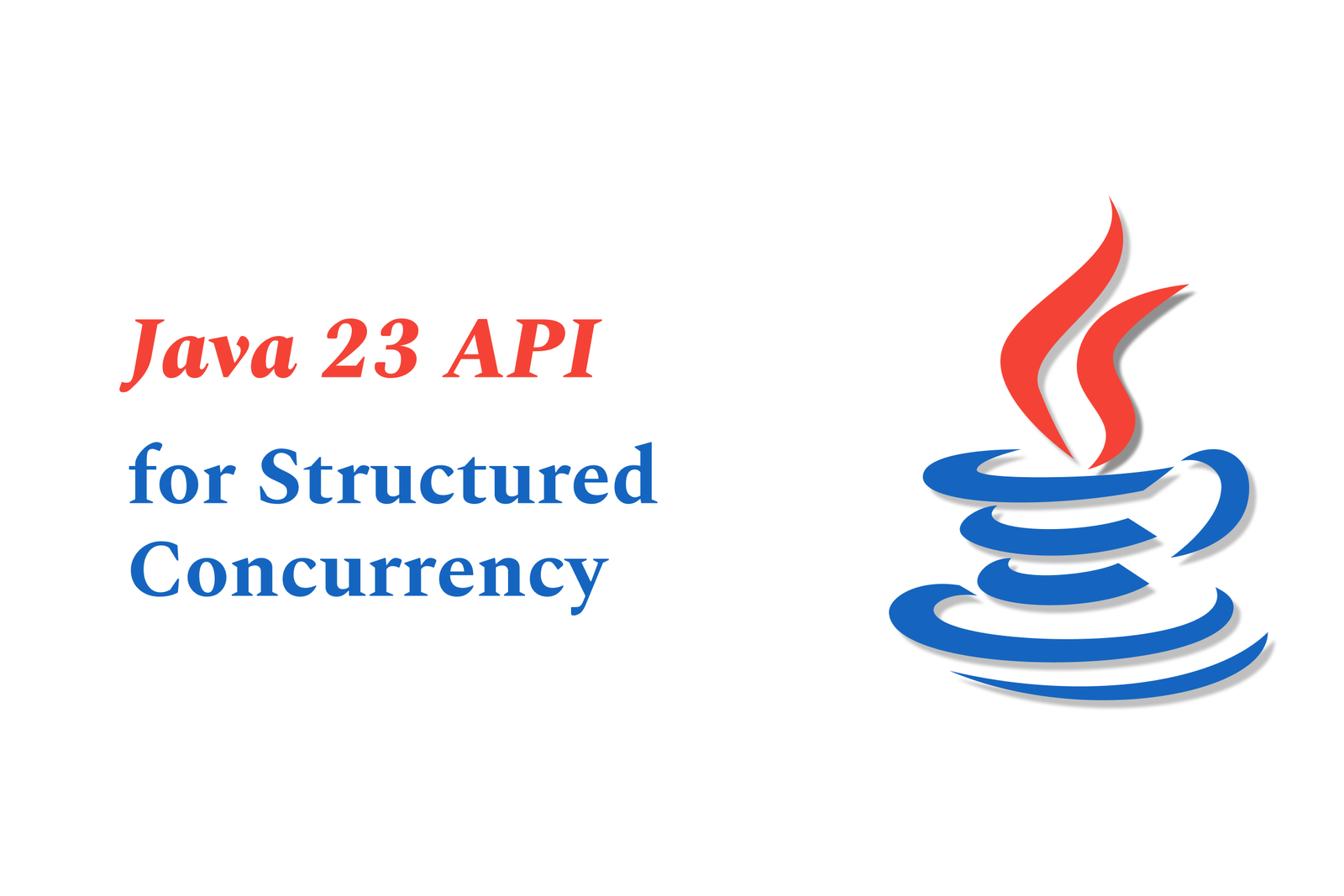Java 23 API for structured concurrency
Java 23’s Structured Concurrency API simplifies managing concurrent tasks by treating groups of related threads as a single unit. Centered on StructuredTaskScope, it improves error handling, cancellation, and code clarity by enforcing clear task lifecycles within structured blocks.
Java 23 API for Structured Concurrency
1 ) Introduction to Structured Concurrency
Structured concurrency in Java treats a group of related tasks running in different threads as a single unit of work.
This approach streamlines error handling, cancellation, improves reliability, and enhances observability.
The core API is centered around the StructuredTaskScope class found in the `java.util.concurrent` package.
This class enables coordination of concurrent subtasks by allowing them to be forked in separate threads and then joined as a unified task.
Structured concurrency is currently a preview feature in Java 23, meaning it is subject to change and requires enabling preview features to use.
2 ) Main Features of StructuredTaskScope
The fork(Callable) method launches subtasks concurrently, returning a Subtask rather than a traditional Future to represent them.
The join() method waits for all subtasks to finish, ensuring the main task continues only after their completion.
The API encourages use within a try with resources block, which automatically handles closing the task scope.
The shutdown() method allows canceling all unfinished subtasks and prevents new ones from starting, enabling early termination policies.
StructuredTaskScope ensures that the task lifecycle remains structured, restricting where subtasks can be joined and improving maintainability.
3 ) Benefits Over Traditional ExecutorService Model
Traditional concurrency with `ExecutorService` and `Future` allowed subtasks to return arbitrarily to any thread or no specific parent, making it difficult to maintain clear task hierarchies.
Structured concurrency confines the lifetime of subtasks within a scope, ensuring subtasks complete before the parent task proceeds.
Error handling and cancellations become simpler and more reliable due to this strict structural approach.
4 ) Common Usage Pattern
Create an instance of StructuredTaskScope with try with resources.
Define subtasks as Callable instances.
Fork subtasks using `scope.fork()`.
Invoke `scope.join()` to wait for all subtasks to complete.
Handle results or exceptions from subtasks.
The scope automatically closes at the end of the try block, freeing resources.
Example:
java
Callable<String> task1 = …;
Callable<Integer> task2 = …;
try (var scope = new StructuredTaskScope<>()) {
var subtask1 = scope.fork(task1 );
var subtask2 = scope.fork(task2 );
scope.join();
// Process results or handle exceptions
}
5 ) Subclasses for Common Policies
Java 23 introduces subclasses such as `ShutdownOnSuccess` and `ShutdownOnFailure`.
ShutdownOnSuccess shuts down the task scope as soon as any subtask completes successfully, useful for “invoke any” scenarios.
ShutdownOnFailure shuts down the task scope upon the first subtask failure, allowing early error propagation.
6 ) Summary
The Java 23 Structured Concurrency API, centered on StructuredTaskScope, introduces a new paradigm for managing multiple concurrent tasks as a cohesive unit.
It improves code clarity by binding task lifetime within structured blocks, simplifies error handling, and improves thread management.
Although still a preview feature, it represents a significant step toward more robust, maintainable, and observable multithreaded programming in Java.
https://justacademy.in/news-detail/how-ios-19-improves-app-privacy-controls
https://justacademy.in/news-detail/best-flutter-practices-every-developer-should-follow
https://justacademy.in/news-detail/how-to-build-custom-swiftui-controls-in-2025
https://justacademy.in/news-detail/flutter-state-management-in-2025:-what’s-trending?
https://justacademy.in/news-detail/android-device-manufacturer-announcements
Related Posts
In 2025, top Angular libraries offer modern, feature-rich components and tools for building dynamic web apps. From powerful data grids to low-code platforms like UI Bakery, these libraries enhance development speed, UI design, and scalability, making them essential for Angular developers.
Migrating from AngularJS to Angular 17 involves gradually upgrading your app by running both frameworks together using tools like ngUpgrade, rewriting components in TypeScript, and adopting Angular’s modern architecture to enhance performance, maintainability, and long-term support.
Angular state management tools help organize and handle app data efficiently, improving scalability and maintainability. Popular options include NgRx for robust, RxJS-based patterns, and newer Signal Store solutions that offer simpler, reactive approaches integrated tightly with Angular’s latest features.
RxJS in Angular empowers developers to manage asynchronous data streams with powerful operators like `forkJoin`, `combineLatest`, and `zip`. Mastering these key operators in 2025 is essential for building efficient, reactive applications that handle complex event sequences seamlessly.
Angular performance optimization in 2025 focuses on improving app speed and responsiveness by using techniques like OnPush change detection, lazy loading, efficient data caching, and AOT compilation. These practices reduce load times, enhance user experience, and ensure scalable, fast Angular applications.
In 2025, Angular remains preferred for large-scale, enterprise apps with its robust, all-in-one framework, while Vue attracts developers seeking simplicity and fast development for smaller projects. Both frameworks excel, with choice driven by project needs and team expertise.
Angular Signals are a new reactive primitive in Angular 16 that enable fine-grained, efficient change detection by automatically tracking dependencies and updating only affected parts of the UI. They simplify state management and boost app performance, revolutionizing Angular's reactivity model.
Angular interview questions to prepare in 2025 focus on core concepts like components, directives, data binding, routing, and dependency injection, along with TypeScript mastery and latest Angular features to ensure strong practical knowledge for building scalable, efficient web applications.
AngularJS reached its official end of support in January 2022, meaning no further updates or security patches. To ensure app security and performance, developers should consider migrating to modern Angular versions or seek third-party long-term support options if immediate migration isn’t possible.
The Angular Roadmap 2025 highlights upcoming features focused on improving developer experience and performance, including zoneless Angular, Signals integration, enhanced Forms, async data handling, improved HMR, and expanded Angular Material/CDK enhancements, driving modern, efficient web app development.










